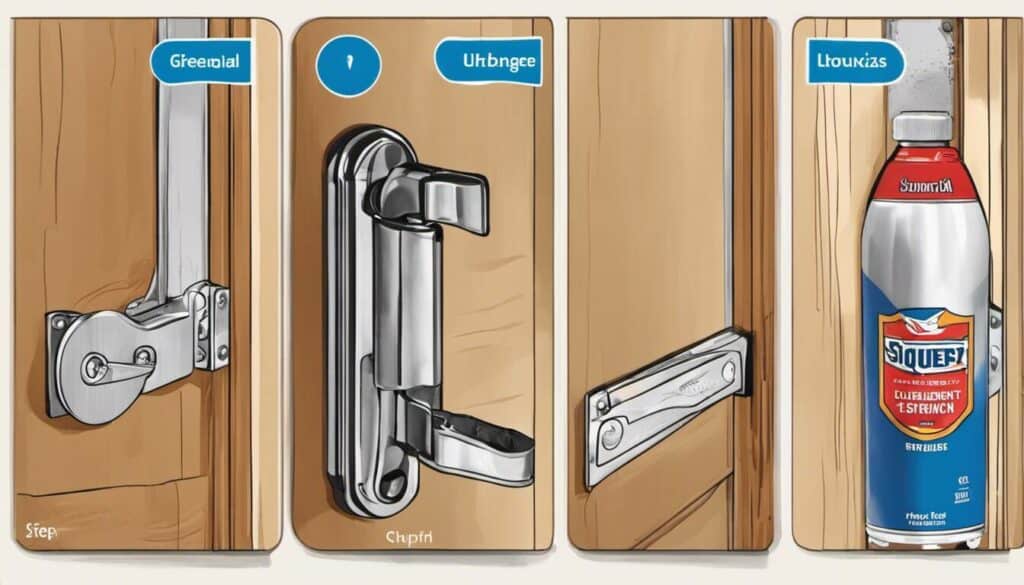I just paid over $1100 for a mold inspector to come to my house to test for mold… and he’s telling me this the beginning (he wants to do follow-up tests which might cost more). That’s why, after researching cheaper alternatives, I was surprised to learn that detecting mold at home is more straightforward than one might think. Areas within your household that are magnets for moisture such as kitchens, bathrooms, and basements are often the starting points of your inspection. Watchful eyes should look for tell-tale signs like discolored walls, ceilings, and areas around windows. A musty smell is another giveaway, hinting at possible mold growth even if you can’t see anything. So keep your senses alert while inspecting, and don’t forget those hidden corners! After this, you’ll be ready to do a visual check.
To test for mold in your home, you can use a DIY mold test kit available from home improvement stores or online retailers. Follow the instructions provided with the kit to collect samples in strategic locations. If the test comes back positive, consider consulting professional mold inspection and remediation services, especially for large amounts of mold.
DIY Mold Inspection and Detection Techniques
When it comes to safeguarding your home from mold, knowing how to effectively spot areas with potential mold growth is key. Visual inspections are a good starting point. Check areas that are prone to moisture, like bathrooms, kitchens, basements, and even around windows where condensation tends to build up. Look for any signs of discoloration on walls or ceilings, which often indicate mold growth. Additionally, pay attention to any musty odors that might linger in specific areas, as this can be another telltale sign of hidden mold.
Moisture Meter
In addition to visual inspections, you can also make use of a moisture meter. Excess moisture in your home can lead to mold growth, so identifying these damp areas is crucial for prevention. By using a moisture meter, you can pinpoint areas in your home that have higher than normal moisture levels—areas where mold is more likely to thrive. This tool provides valuable insight into the presence of excessive moisture, giving you the opportunity to take proactive measures to address it before it leads to mold issues.
DIY Mold Test Kits
If you suspect the presence of mold but can’t see any visible signs, or if you simply want to be sure about the air quality in your home, DIY mold test kits can be a useful option. These kits are readily available from local home improvement stores or online retailers and can provide a simple and cost-effective way to check for mold in your living space.
The process typically involves using a petri dish or other collection device to gather samples from strategic locations around your home, depending on the type of test kit. Following the instructions provided with the kit, you’ll leave the samples undisturbed for a specified period of time. Once the designated time has passed, you’ll observe and note any mold growth in the samples compared to the control, which can provide valuable information about whether mold spores are present in your home environment.
These DIY methods enable homeowners to actively monitor their living spaces for potential mold issues without having to rely solely on professional inspections. Taking proactive steps such as visual inspections, utilizing a moisture meter, and employing DIY mold test kits empowers individuals to maintain a healthy environment within their homes while also catching any potential mold problems early on.
As we shift our focus from detection techniques and move towards discussing the significance of air testing and kit selection in managing indoor mold concerns, let’s delve deeper into maintaining a safe and healthy living space.
Importance of Air Testing and Kit Selection
When it comes to checking for mold in your home, it’s not enough to only focus on visible signs. Monitoring the air quality plays a crucial role in ensuring that any potential mold spores present in the atmosphere are identified. This is particularly important for individuals who suffer from allergies or respiratory problems, as they can be more sensitive to the presence of mold.
Air quality testing becomes crucial because sometimes mold isn’t easily visible. Even if you don’t see mold growth, there could still be mold spores lingering in the air, causing health issues. Air testing provides a comprehensive picture of the indoor environment, helping to identify hidden mold growth and ensure that the air you breathe is safe and healthy.
Consider this scenario: You’ve inspected your home thoroughly and haven’t found any visible signs of mold. However, you or your family members have been experiencing unexplained allergy symptoms. This is where air testing becomes invaluable. It can help pinpoint the presence of airborne mold particles, offering peace of mind and guiding necessary remediation steps.
Now, let’s talk about selecting the right mold test kit. When it comes to choosing a suitable mold test kit, it’s important to understand the different types available and their specific applications.
There are various types of mold test kits on the market, each designed for different purposes. From petri dish tests to tape lift tests and swab tests, these kits offer diverse methods for detecting mold. Consider factors such as the size of your home and the suspected areas of contamination, it’s crucial to select a test kit that aligns with your specific requirements.
For instance, if you suspect hidden mold growth behind walls or within HVAC systems, an air sampling cassette can be used to collect air samples for laboratory analysis. On the other hand, if you’re primarily concerned about visible spots on surfaces, a swab test may provide more targeted insights.
By understanding the unique features of each type of test kit, homeowners can make informed decisions regarding which method best suits their needs.
Understanding the significance of air testing in detecting airborne mold particles and selecting the most appropriate mold test kit paves the way for thorough and effective mold inspection at home. These steps not only contribute to a healthier living environment but also empower homeowners with valuable insights for proactive mold management.
Identifying and Sampling Mold Growth
Mold comes in different shapes, sizes, and colors, but there are several types more likely to appear in your home. Stachybotrys chartarum, commonly known as toxic or black mold due to its distinct dark color, thrives in damp, humid areas like flooded basements or water-damaged ceilings. Mucormycetes prefers warmer environments with high humidity and may appear as white or grey growths. Then there’s Alternaria, known for its green or black “pepper-like” appearance and commonly found in damp areas such as showers or under leaky sinks. Lastly, Aspergillus can appear powdery and is often found in warm, dusty climates.
Expanding on this idea, when identifying these molds at home, it’s essential to know where they typically grow. For example, checking behind the refrigerator, under sinks, in ventilation ducts, and on the backside of acoustic ceiling tiles could reveal signs of mold infestation. Look out for visible signs of discoloration or musty odors, as these may indicate the presence of mold.
Sampling Techniques
Now that we have an understanding of the common types of household molds, let’s discuss how to collect samples. There are a few techniques available, like swab tests, tape lifts, and air sampling methods. Swab tests involve using a cotton swab to collect samples from surfaces suspected of mold growth before transferring them to a petri dish with a special material that encourages any mold spores present to grow over time.
On the other hand, tape lifts involve using clear adhesive tape to pick up mold spores from surfaces, which are then applied to a glass slide or a petri dish for later analysis.
Air sampling methods capture mold spores present in the air you breathe within your living environment. Various tools can be used for this purpose, including settle plates and air sampling pumps.
Whatever technique you choose—swab tests, tape lifts, or air sampling—it’s crucial to collect samples in strategic locations to get an accurate assessment of mold presence. Different parts of your home might have varying levels of moisture or airflow that contribute differently to mold growth. By targeting these specific areas for sampling, you’ll get a more comprehensive overview of whether there’s an issue with mold growth in your home.
In the quest to understand our living environment and combat potential health hazards posed by mold, it’s essential to comprehend the results obtained from these tests. Let’s now turn our attention to uncovering the mysteries hidden within your mold test findings.
Understanding Your Mold Test Results
So, you’ve gone through the process of testing for mold in your home, but now there’s a report in front of you that might as well be written in a different language. Don’t panic! Let’s break it down into easy-to-understand terms.
When you get your results back, they’ll usually show you how many spores of each type of mold were found in the air. It might look like a bunch of long names and numbers at first, but it’s not as tricky as it might seem. Different types of mold are common indoors, but some types can be more harmful than others. The key is to figure out if the levels of mold are normal or if they’re so high they might cause health problems.
Interpreting the Results
Understanding Mold Spore Counts
The number of spores isn’t as scary as it may sound. Low and normal levels are usually okay because we’re always breathing in some amount of mold spores. But if the count of certain molds is really high, this could be a sign that there’s a serious issue.
Here’s an example to help make this clearer:
- If the count is below 500 spores per cubic meter, that’s considered normal.
- But if it’s above 500, it might mean there’s a lot of mold growing somewhere inside your home.
““Exposure to mold spores can cause health problems, especially for individuals with allergies, compromised immune systems, or respiratory disorders.” – Environmental Protection Agency
If you or someone in your family has health issues like allergies or asthma that seem to get worse when you’re home, high mold counts could be making those problems worse. It’s one thing to have some harmless mold around, but if there’s too much, it can start causing health issues. If you’re seeing symptoms like sneezing, coughing, or skin rashes and suspect it’s linked to mold exposure, then these results can help confirm whether there’s a connection between the symptoms and the presence of mold.
Seeking Professional Help
Getting professional help is essential in cases where the results indicate significantly high mold presence or if interpreting the results seems unclear. Professional inspectors have all sorts of tools and experience under their belts to give you a better idea of what’s going on.
Not only can they help you figure out how serious the problem is but also guide you on what needs to be done next. When it comes to something as pivotal as your health and home safety, having an expert by your side can save a lot of uncertainty and worry.
Remember: this isn’t just about tidying up an untidy space—it’s about keeping yourself and your loved ones safe from potential harm caused by excessive exposure to mold.
By understanding and interpreting your mold test results accurately, you’re now better equipped to make informed decisions on the next steps to ensure the safety and well-being of your household.
How to Prevent Mold Growth at Home
Controlling moisture in your home is crucial for preventing mold growth. Mold thrives in damp environments, so keeping the humidity levels low can go a long way in mold prevention. The ideal indoor humidity level is around 30-50%, and using dehumidifiers in damper areas like basements or bathrooms can help maintain these levels low can go a long way in mold prevention. The ideal indoor humidity level is around 30-50%, and using dehumidifiers in damper areas like basements or bathrooms can help maintain these levels.
Next, promptly repairing any leaks or water damage in your home is essential. Even minor plumbing leaks can create an environment conducive to mold growth. Addressing these issues promptly can significantly reduce the risk of mold taking hold in your home and prevent potential costly repair bills related to water damage down the line.
It’s important to recognize and take care of any musty odors or signs of dampness in areas like basements or sheds, as they are particularly susceptible to mold growth due to their lack of ventilation and potential for high humidity levels. Proper ventilation is key to reducing the risk of mold in these spaces. Installing vents or using fans can help improve airflow and prevent moisture buildup.
Regular Cleaning
In addition to controlling moisture levels, regular cleaning routines are essential for preventing mold growth. Wiping down surfaces prone to moisture with a clean cloth can help remove any excess moisture and prevent mold from finding a place to grow.
Furthermore, using mold-resistant products in areas prone to dampness, such as bathrooms and kitchens, can inhibit the growth of mold, providing an additional layer of protection against potential infestations.
Imagine if you let a small spill sit on your kitchen counter for too long—it might lead to unsightly stains or even worse, mold growth. Regular cleaning and maintenance can prevent this from happening by addressing moisture buildup proactively before it becomes a larger issue.
By being mindful of the moisture levels in your home and adhering to regular cleaning routines, you can significantly reduce the risk of mold growth and create a healthier living environment for you and your family.
In the next section, we’ll explore the advantages and disadvantages of DIY mold testing methods.
Pros & Cons of DIY Mold Testing
DIY mold testing has become increasingly popular as a convenient and cost-effective method for homeowners to conduct initial assessments of their indoor air quality. The convenience and affordability of these kits provide a sense of empowerment, enabling individuals to take control of their living environment and monitor potential mold issues themselves.
One significant advantage of DIY mold testing is the accessibility it offers. Homeowners can purchase these kits from local hardware stores or online retailers, making it a hassle-free process. The accessibility of these kits means that individuals can promptly address any concerns they have about mold growth in their homes without having to wait for professional services.
Imagine being able to check for mold in your home as easily as testing the temperature outside! This kind of accessibility gives homeowners peace of mind and immediate action when needed.
Additionally, the cost-effectiveness of DIY mold testing cannot be overlooked. These kits are relatively affordable and can provide valuable insights into the presence of mold in the home without the expense of hiring a professional right away. It’s an excellent starting point for those who want to monitor their indoor air quality without breaking the bank.
While DIY mold testing can be convenient and cost-effective, it does come with some limitations that homeowners should be aware of.
Limitations of DIY Testing
One notable limitation of DIY testing is the potential for inaccurate results. Depending on the kit used and the sampling techniques applied, there is a possibility of false negatives or false positives. This could lead to misunderstandings about the actual presence or absence of mold in the home, potentially prompting unnecessary distress or overlooking genuine issues.
Furthermore, interpreting the results of a DIY mold test requires a certain level of expertise. While the kits come with instructions, understanding and analyzing the outcomes may not be straightforward for everyone. This lack of professional interpretation can lead to confusion and uncertainty about the appropriate next steps in addressing any identified mold issues.
As such, it’s important to recognize that while DIY testing serves as a useful first step, it does not replace the essential role of professional expertise when dealing with mold. In cases where significant mold growth is suspected or identified, seeking the guidance of professionals is crucial for accurate assessment and effective remediation.
Just like how self-diagnosing a health condition only goes so far before consulting a doctor becomes necessary, DIY mold testing is limited in its ability to fully address complex mold-related concerns without professional intervention at some point along the way.
In conclusion, while DIY mold testing presents several advantages in terms of accessibility and cost, homeowners should remain attentive to its limitations and seek professional assistance when facing more complex or uncertain mold situations.
Understanding the benefits and drawbacks of DIY mold testing is vital for homeowners looking to maintain a healthy living environment. By balancing the affordability and accessibility of these tests with their potential limitations, individuals can make informed decisions when addressing indoor mold concerns.






